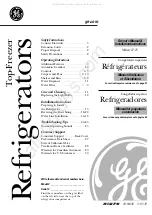
Technical Notice CSO/CPO V1.1 / 10.14
Page 79 / 86
Troubleshooting 10
Chapter contents
This chapter contains useful instructions to troubleshoot your refrigeration unit.
10.1
Warnings
We decline any responsibility for operations carried out on the unit by unqualified personnel. Before
troubleshooting the so-called refrigeration circuit, first make sure that the control system is operating cor-
rectly and properly configured.
If the failure persists after the temperature control system settings are checked and confirmed, then the
refrigeration unit has to be checked and possibly repaired.
Changing settings and repairing the refrigeration circuit are very delicate operations. Therefore, we re-
commend conferring this work to a qualified refrigeration engineer.
10.2
Checks
10.2.1 Pressure checks
It is strongly recommended to confer any intervention to a refrigeration engineering specialist.
B
URNS
Before intervening on the unit, switch off the electrical power supply.
Be careful when intervening on the refrigeration circuit because some parts can get very hot (in
particular, the copper pipings).
HFC gases represent today the best solution to protect the environment. However, they must be
handled with precaution and never be released into the atmosphere, but recovered in a reservoir.
For this check, two pressure gauges reserved only for use with HFC gases are necessary:
• 1 low pressure (LP) gauge graduated from -1 to +10 bars.
• 1 high pressure (LP) gauge graduated from 0 to +30 bars.
Each of these pressure gauges will be equipped with a flexible pipe terminated with a 1/4" flare coupling.








































